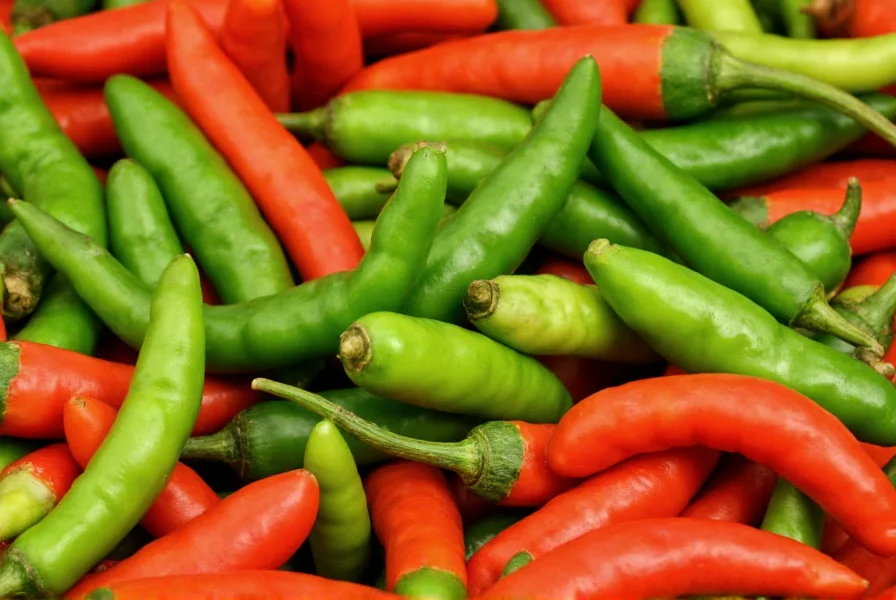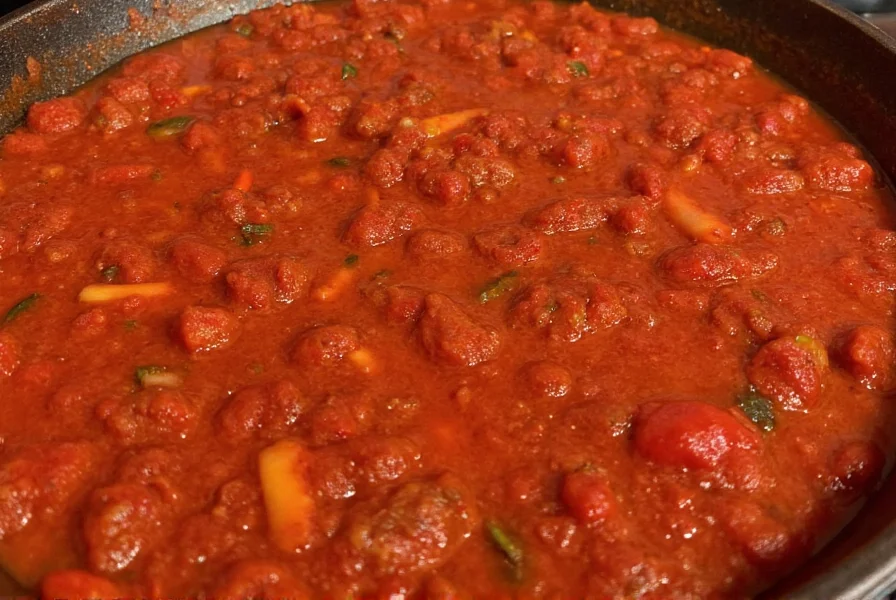The Science Behind Pepper Fermentation
Fermentation transforms ordinary peppers into extraordinary flavor vehicles through natural microbial activity. When peppers are submerged in a saltwater brine (typically 2-5% salt concentration), beneficial lactic acid bacteria naturally present on the pepper skins begin consuming sugars. This anaerobic process produces lactic acid, which lowers the pH, preserves the peppers, and creates the distinctive tangy complexity characteristic of well-fermented pepper sauces.
Unlike vinegar-based hot sauces that rely on immediate acidity, fermented versions develop their flavor profile gradually. The lactic acid bacteria work alongside naturally occurring yeasts to break down complex compounds, creating new flavor molecules that yield notes of earthiness, fruitiness, and umami that simply can't be replicated through quick vinegar infusion methods.
Benefits of Fermentation Beyond Heat
Fermented pepper sauce offers several advantages over traditional hot sauce formulations. The natural preservation process extends shelf life significantly while maintaining nutritional value. During fermentation, peppers actually increase their bioavailability of certain nutrients and develop beneficial enzymes and probiotics that support digestive health—a feature absent in vinegar-based alternatives.
| Characteristic | Fermented Pepper Sauce | Vinegar-Based Hot Sauce |
|---|---|---|
| Flavor Development | Complex, evolving over weeks/months | Immediate, static after production |
| Preservation Method | Natural lactic acid production | Added vinegar |
| Nutritional Profile | Enhanced bioavailability, probiotics | No probiotic benefits |
| Shelf Life (unopened) | 1-2 years refrigerated | 6-18 months |
Pepper Selection for Optimal Fermentation
The choice of peppers dramatically influences your fermented pepper sauce's final character. While habaneros create intensely fruity, floral sauces with significant heat, milder options like jalapeños or serranos yield more approachable results. Many artisanal producers blend multiple pepper varieties to achieve balanced flavor profiles—combining the smokiness of chipotles with the bright fruitiness of fresnos, for example.
For successful fermentation, always select fresh, firm peppers without blemishes or soft spots. The natural yeasts and bacteria needed for fermentation reside on the pepper skins, so avoid washing with soap or sanitizers that would kill these essential microorganisms. Some traditional methods even include a small amount of raw honey or fruit to provide additional sugars for the fermentation process.

Understanding the Fermentation Timeline
Fermentation isn't a process you can rush. Most pepper sauces require a minimum of 2-3 weeks for basic flavor development, though many producers allow theirs to ferment for 3-6 months for maximum complexity. During this time, several stages occur:
- Days 1-3: Initial microbial activity begins, often visible as bubbling
- Weeks 1-2: Lactic acid bacteria dominate, pH drops significantly
- Weeks 3-8: Flavor compounds develop and mellow
- Months 2-6: Complex flavor maturation and refinement
Patience yields rewards—sauces fermented for longer periods develop noticeably smoother, more integrated flavors with less harsh heat. The initial sharp, vinegary notes that sometimes appear early in fermentation mellow into rounded, complex profiles as the process continues.
Crafting Your Flavor Profile
While the basic fermented pepper sauce contains just peppers, salt, and water, many variations incorporate additional ingredients to create distinctive profiles. Garlic adds pungency that mellows beautifully during fermentation. Fruits like mango, pineapple, or berries introduce natural sugars that feed the fermentation process while contributing complementary flavors. Even unexpected additions like roasted carrots or beets can create remarkable depth and subtle sweetness.
Timing matters when adding secondary ingredients. Some elements, like delicate herbs, work best added after the primary fermentation completes to preserve their volatile compounds. Others, like garlic or hardy spices, benefit from the full fermentation period as their flavors integrate more thoroughly with the pepper base.

Safety Considerations for Homemade Versions
When making homemade fermented pepper sauce, safety should be your priority. Proper salt concentration (typically 2-5%) prevents harmful bacteria growth while allowing beneficial microbes to thrive. Always keep peppers fully submerged below the brine line—kraut weights or fermentation airlocks help maintain this critical condition.
Watch for warning signs of problematic fermentation: mold on the surface (not to be confused with kahm yeast, which is harmless), foul odors beyond the expected tangy sourness, or slimy texture. When in doubt, throw it out. Properly fermented pepper sauce should have a clean, tangy aroma and maintain the vibrant color of the peppers used.
Culinary Applications Beyond Heat
Fermented pepper sauce shines in applications where its complex flavor can enhance rather than overwhelm. Use it as a finishing sauce drizzled over tacos or eggs, blend it into mayonnaise for sandwiches, or incorporate it into marinades where its enzymatic activity helps tenderize proteins. The natural acidity makes it an excellent component in salad dressings, replacing some or all of the vinegar.
Chefs increasingly recognize fermented pepper sauce as a flavor enhancer rather than just a heat source. Its umami-rich profile complements roasted vegetables, enhances soups and stews, and adds depth to otherwise simple preparations. Unlike vinegar-based hot sauces that primarily add heat and acidity, fermented versions contribute multiple flavor dimensions that integrate seamlessly into dishes.
Storage and Shelf Life Optimization
Once fermentation completes and you've blended your sauce to desired consistency, proper storage ensures maximum shelf life. Refrigeration dramatically slows the fermentation process, preserving your sauce's flavor profile. Most properly made fermented pepper sauces remain at peak quality for 1-2 years when refrigerated.
For longer preservation, consider water bath canning after fermentation completes, though this will halt the probiotic benefits. Always use clean, sterilized bottles with tight-sealing lids, and leave appropriate headspace. The naturally low pH of properly fermented pepper sauce makes it relatively safe for canning compared to other vegetable products.
Frequently Asked Questions
How long does fermented pepper sauce last compared to regular hot sauce?
Properly fermented and refrigerated pepper sauce typically maintains peak quality for 1-2 years, sometimes longer than many commercial vinegar-based hot sauces. The natural preservation from lactic acid fermentation creates an environment inhospitable to spoilage organisms. Vinegar-based sauces often have a shelf life of 6-18 months, though both types can remain safe beyond these periods if stored properly and show no signs of spoilage.
Can I make fermented pepper sauce without salt?
Salt plays a critical role in the fermentation process by inhibiting harmful bacteria while allowing beneficial lactic acid bacteria to thrive. While some fermentation methods use alternative preservatives, traditional pepper fermentation requires salt (typically 2-5% by weight). Reducing salt significantly increases the risk of spoilage and unsafe fermentation. For those concerned about sodium, you can slightly reduce salt content but never eliminate it completely from the initial fermentation stage.
Why does my fermented pepper sauce taste different from batch to batch?
Natural variation is inherent in fermentation due to multiple factors: pepper ripeness and variety, ambient temperature fluctuations, wild microbial populations present, and fermentation duration. These variables create subtle (or sometimes significant) differences between batches. This is considered a feature of artisanal fermentation rather than a flaw. Commercial producers minimize this variation through controlled environments and starter cultures, but home fermenters should expect and appreciate these natural variations as part of the process.
What's the white film sometimes appearing on my fermenting peppers?
This is likely kahm yeast, a common harmless surface growth during vegetable fermentation. Unlike mold, which appears fuzzy and can be various colors, kahm yeast forms a smooth, white film. Simply skim it off the surface—your fermentation remains safe. To prevent kahm yeast, ensure peppers stay fully submerged below the brine line, use proper salt concentration, and consider adding a small piece of horseradish root which naturally inhibits yeast growth while not affecting beneficial bacteria.











 浙公网安备
33010002000092号
浙公网安备
33010002000092号 浙B2-20120091-4
浙B2-20120091-4